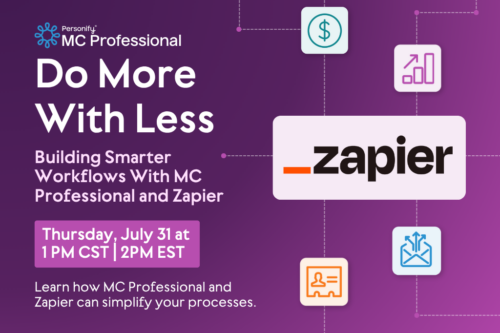A ribbon cutting ceremony celebrates a new beginning. It also has the added benefit of boosting your business’s visibility, introducing you to the community and enhancing your business’s reputation.
If you’re a chamber of commerce or a member of a chamber of commerce, a ribbon cutting ceremony is inevitable at some point! But what is involved in a ribbon cutting ceremony and how do you plan a ribbon cutting?
We’ll cover the essentials including a ribbon cutting ceremony checklist, a speech template and an example program.
What is the purpose of a ribbon cutting ceremony?
A ribbon cutting ceremony is an event that’s focused on celebrating your organization’s milestones or publicizing a new achievement. It can be for:
- Marking a grand opening of a:
- Place of religious worship like a mosque, synagogue or church
- Hospital or doctor’s office
- Business
- Home
- A re-opening
- Celebrating milestone
- A new location of business
Chambers of commerce usually provide ribbon cutting ceremonies as a complimentary service included in their chamber of commerce membership fee. Many have an application that businesses can fill to schedule a ceremony.
A chamber of commerce usually takes on the responsibility of these aspects of the ribbon cutting:
- Supplies like the ribbon and scissors
- Organizing the event
- Sending out press releases
- Event speeches (by the chamber President or another chamber representative)
- Providing marketing
- Hiring a photographer or taking photos
- Publicizing the event on the chamber of commerce website and social channels
- Supplying vendor options for catering and refreshments
What happens at the ceremony?
A ribbon cutting ceremony often includes these key events:
- Remarks by stakeholders, notable members of the community, and business representatives
- Cutting of a ribbon with big scissors
- A tour of the facilities
You may also decide to offer refreshments once the ceremony concludes. Guests often bring a gift for the business owner to mark the occasion.
Who cuts the ribbon at a ribbon cutting ceremony?
Typically, the person responsible for cutting the ribbon at the ceremony is either:
- A member of the community
- A local official like a mayor
- A representative of the chamber of commerce
- The business owner or senior executive of the business
Who you select depends on your business or organization and its community involvement. You may also want to consider what kind of impact or image you’d like your business or organization to have in the community when you select your ribbon cutter. Finally, make sure that your photographer is aware who that person is so you can get lots of photos beyond just the key ribbon cutting moment, as well as photos of other important people at your event.
How to plan a ribbon cutting ceremony [+checklist]
Ready to start planning? Here is your essential checklist, including ribbon cutting ceremony ideas for your program.
1. Select date and time
Picking the day
Choose a date when you are 100% certain that the space will be complete. If your ceremony is outside, keep tabs on the weather for that day and set aside a backup date just in case. You may also want to create a contingency plan to relocate inside that includes logistics. If your space is smaller, you may opt for an inside ceremony right away to avoid overcrowding if the weather isn’t great.
Once you find your date, make sure key stakeholders and officials can make it. You can use a polling tool like Survey Monkey, Doodle, or WhenAvailable to check what time works best.
Picking the time
Factors to consider when choosing the best time include:
- Lighting
- Meal times like lunch and dinner
- General availability for key attendees (busy times of the work day, etc)
Your best bet is around 2-3pm in the afternoon as most people will have time in their schedule and will be available. The lighting is also good around this time because it’s not too harsh and you’ll likely hit golden hour. Plus, there’s the added bonus that it’s between meal times.
2. Make list of attendees
Determine who you want to attend including:
- Dignitaries and public figures
- Media
- Team members
- Chamber of commerce representatives
- Friends and family
- Supporters, past sponsors and donors
Reach out to your board and executives to make sure there’s nobody you’re missing. Lastly, take the size of your venue into consideration as you streamline your list.
3. Pick your ribbon cutter
As mentioned, you may want the owner or a senior executive of the business or organization to cut the ribbon. However, if you’re a new business or organization, it might make more sense to pick a notable community member or public official as your ribbon cutter since it will help boost your reputation in the eyes of the immediate community.
4. Prepare the business owner speech
Your ribbon cutter may want to create their own speech, but to make things easier, you may also want to write up a mock-up that they can use as a jumping off point. Make sure to keep it short and sweet.
If you’re unsure what to say at a ribbon cutting ceremony, here is a speech template:
- Welcome remark, introducing the business and yourself (ie “My name is ____ and I am the _______ of [business/organization]”).
- Show appreciation to the community and audience for attending as well as to supporters and key stakeholders that helped make this milestone and event happen.
- Introduce notable members of the community in attendance and who will be cutting the ribbon.
- Describe what will happen after ribbon cutting (such as the tour, refreshments, other speakers, etc).
- Introduce that the ribbon cutting will now happen.
[Allow for the ribbon cutting and accompanying photography] - Thank the audience for attending on behalf of [organization/business].
5. Create your ribbon cutting invitation
In your invitation, include essential information such as:
- Time and Date
- Location
- Directions
- RSVP
- What to wear to the ribbon cutting ceremony
People often give gifts at ribbon cutting ceremonies. Depending on your business, you may want to note this or even mention that this isn’t necessary but is appreciated.
6. Send invites and publicize your event
It’s time to send out formal invitations to your attendees. You may want to only send paper invites, purely digital, or a hybrid depending on the importance of your invitees (i.e. give paper copies to key attendees).
Create a press release for your ribbon cutting that you can send to the media. Include your business or organization’s story and how this milestone ties into your mission.
Be sure to publicize your event on your social channels as well as your chamber of commerce newsletter in the weeks leading up to it. Finally, send out reminder emails to attendees as the ceremony nears.
7. Purchase your ribbon cutting ceremony scissors
Wondering where to buy the big scissors for a ribbon cutting ceremony? Majority of the time your chamber of commerce will already have a pair on hand that you can use. However, if you’re responsible for purchasing the scissors yourself, you may consider:
- Buying them new, such as from Amazon.com
- Renting scissors via party rental companies
8. Purchase ribbon for the ceremony
If you’re indecisive about what color ribbon for your ribbon cutting ceremony, there’s really no wrong answer. Many people opt for red, but you may want to choose a color that’s linked to the business or has a cultural significance to the organization.
9. Plan out your ribbon cutting ceremony
Now that you’ve completed pre-event tasks, it’s time to map out your ceremony. To help you get started, here are some event planning tips.
Consider key aspects such as:
- MC/Host
- Speakers
- Ribbon Cutter
- Entertainment
- Refreshments and Food
- Supplies and Decorations (flowers, balloons, etc.)
- Photographer*
* Note: Make sure to make a photo list of key moments and people that the photographer needs to capture. You may also want to ask key attendees to avoid wearing loud or busy patterns because it’s often difficult to photograph.
10. Create your ribbon cutting ceremony program
Typically, a ribbon cutting ceremony isn’t too long and takes 1 to 2 hours. Here’s an example of a typical ceremony program:
- Welcome
- Introduce yourself and say thank you to notable guests, supporters and stakeholders
- Give a brief history of your business and its impact on the community thus far
- Ribbon cutting
- Make sure to take several photos with the scissors open so it looks like the ribbon is about to be cut. Have two people stretch the ribbon taut and put notable people between them (for example, business owner and public official). Then cut the ribbon.
- Conduct the tour
- Light refreshments and food
11. Thank attendees
Send a quick thank you note after the event to those in attendance. For notable invitees, you can share photos from the event with permission from the photographer.
Marking Accomplishments With a Ribbon Cutting
Ribbon cutting ceremonies celebrate an important milestone and the start of a business or organization’s long-term success. It connects businesses and organizations with important community members who can become supporters, sponsors, and partners in future events and initiatives. It also sparks the beginning of that business or organization’s participation in their greater community.
Looking for more ideas to get involved? If you’re a small town chamber of commerce, we’ve rounded up the 16 best small-town chamber of commerce ideas here.
Elevate your chamber of commerce with better renewal rates, more revenue, and improved member relationships, all with the right membership software. Learn more here.
















